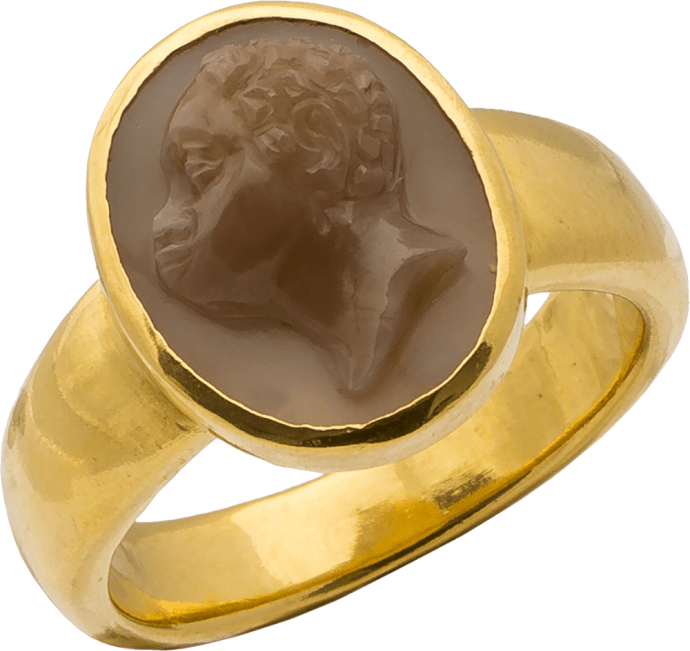


Renaissance Blackamoor Cameo Ring
, 16th century


Renaissance Blackamoor Cameo Ring
Description
With the exploration of sub-Saharan Africa and the discovery of the New World, Renaissance patrons began to collect exotica from new places. Interest in people from other lands took on many forms, including the collection of images of foreign cultures. Jewelry, like the present cameo, was one way in which Europeans could display their worldliness. Cameos like this one show the various European perceptions of "the other."
Substantial D-section hoop, widening at the shoulders supports an oval collet set with an agate cameo. The cameo depicts an African male bust facing to the viewer's left. The setting is modern; the cameo in perfect condition.
Literature:
For a similar ring see British Museum 1867,0507.747 (Dalton 1915, number 220). Several other examples of African male bust cameos can be seen in the British Museum, in the collection of Her Majesty Queen Elizabeth and in the Content Cameo Collection. For a similarly depicted man see The Art of Gem Engraving, no. 323. The Renaissance saw renewed interest in ancient cameo techniques and the development of new collections, such as the Medici Collection in Florence (see Tondo and Vanni 1990 and Giuliano 1989) and the Palazzo Pitti. For more on cameos in the Renaissance see Brown 1997 and Kris 1930. On Africans in cameo see Bindman and Gates 2001, p. 151-153.
